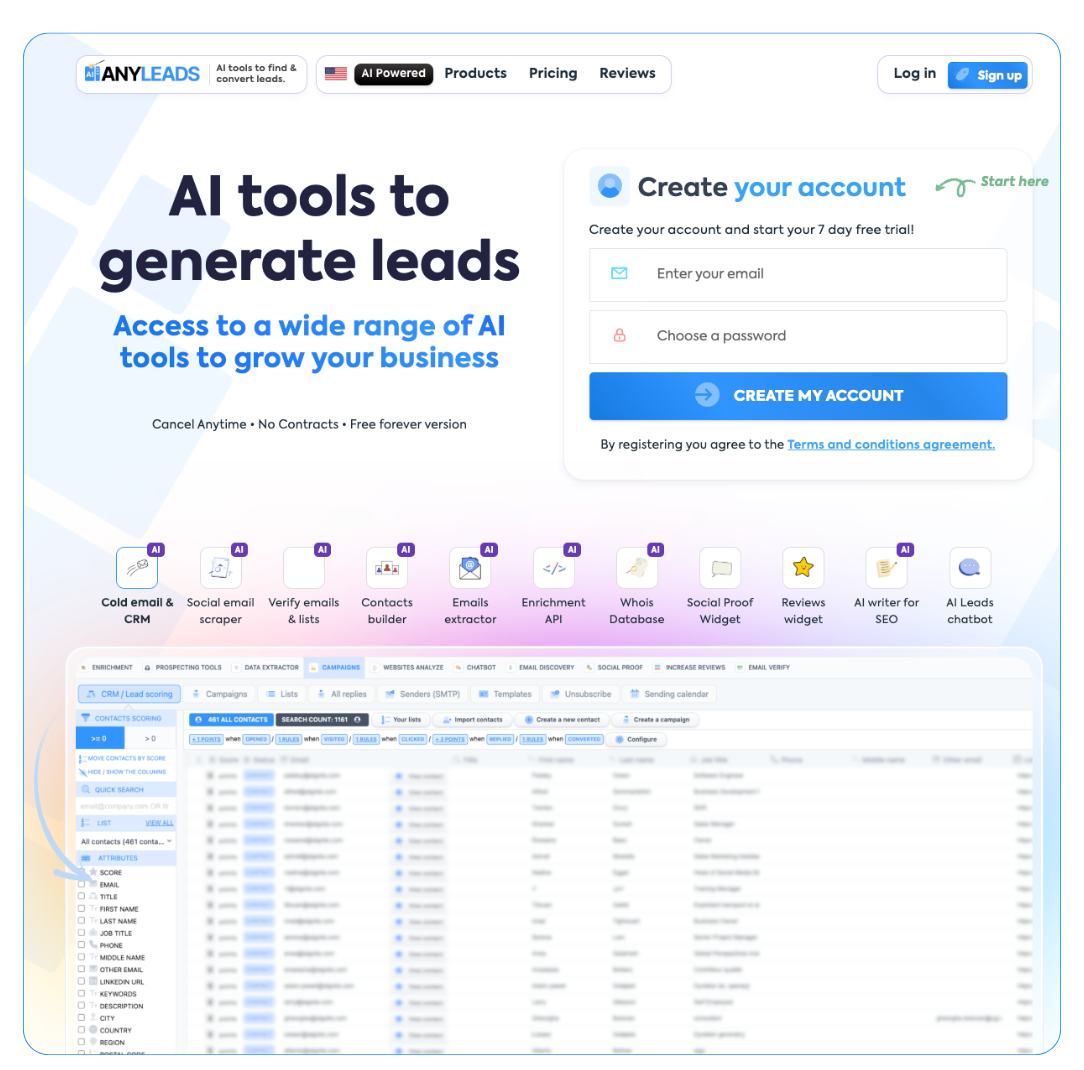 LIMITED SPOTS
All plans are 30% OFF for the first month! with the code WELCOME303
LIMITED SPOTS
All plans are 30% OFF for the first month! with the code WELCOME303

 LIMITED SPOTS
All plans are 30% OFF for the first month! with the code WELCOME303
LIMITED SPOTS
All plans are 30% OFF for the first month! with the code WELCOME303


Now we are going to talk about a key aspect of email marketing that can really make or break our campaigns: the art of email list cleaning.
Email list cleaning is like giving your email list a little spa day. By removing invalid, inactive, or disengaged addresses, we ensure our messages land in the inboxes of people who are genuinely interested. It's all about making sure our words reach ears that want to hear them.
But hold onto your hats, because cleaning an email list isn't as easy as pie. Think of it as trying to make a three-course meal with only a microwave and a frying pan. Here are a few bumps we might hit along the way:
Despite these challenges, taking the time to clean our email list pays off in spades. It helps us stay in touch with a community that genuinely wants to engage. And remember, it’s not just about the numbers — it’s about connection. So, let's roll up our sleeves and give that email list the care it deserves!
Now we are going to talk about why keeping an email list clean is essential and how it can work wonders for your business.


We all know that feeling when you send an email, and it vanishes into the void. It’s like sending a postcard to a black hole, right? Cleaning up your email list does wonders for your deliverability. When you target actual, active users, email providers like Gmail and Outlook give you a gold star. If your list is swamped with invalid addresses, your bounce rate shoots up faster than your caffeine intake on a Monday morning.
Remember that time when a colleague was thrilled about their email campaign, only to discover that half of their list had questionable addresses? They cleaned up, and like turning on a light switch, their inboxes started filling up again! A case study from Clearout showed a 42% improvement in inbox placement after cleaning out 18% of invalid addresses. It’s like finding a sock that matches another one—pure magic!
What’s the use of a massive email list if no one’s actually engaging? It’s like throwing a party and no one shows up. By removing disinterested subscribers, you boost those open and click rates. Those engagement signals are like gold stars for inbox providers, waving flags saying, “Hey! We’re relevant!” If your emails keep getting opened, you’ll find yourself landing right in the inbox more often, like a favored guest.
Did you know some email providers charge you based on your contact count? Imagine paying for a gym membership, but never stepping foot in the gym! If you have a list of 25,000, and 30% is inactive, you could be tossing cash into the void—talk about a money pit. By giving your list a good spring cleaning, you can free up dollars for other projects, like stocking up on snacks for your next strategy meeting!
Spam complaints often come from those who never signed up, or worse, forgot they did. Imagine getting spammed by your own emails—what a buzzkill! A single spam complaint for every 1,000 emails you send can cost your sender reputation dearly. Keeping your list clean helps retain your reputation and avoids unnecessary damage. So, hit the delete button, and spare those future inboxes some drama!
Garbage data leads to garbage decisions. If you’re basing your marketing strategies on a list full of inactive users, you might as well be casting a spell in the dark. Once your list is clean, your analytics begin to reflect the truth, and with that comes better strategies. Think of your list like a garden; weed it out, and you might just find some beautiful blooms!
We’re living in a world full of regulations, folks! Keeping up with laws like GDPR and CAN-SPAM is crucial. Cleaning your list helps keep you compliant and avoids the headaches that come with legal entanglements. Some businesses have faced hefty fines for not dotting their I’s and crossing their T’s. It’s better to be safe than sorry—right?
Next, we will explore some practical strategies to keep your email list spick and span, ensuring it’s filled with active subscribers who genuinely want to hear from us.

| Automation Type | Functionality |
| Engagement Segmentation | Tags subscribers based on their activity levels. |
| Re-engagement Campaigns | Automatically reaches out to re-engage. |
| Hard Bounce Management | Removes emails that bounce excessively. |
| Soft Bounce Tracking | Tracks and manages temporary delivery issues. |
| Spam Handling | Screens users who signal spam complaints. |
| Source Tagging | Tags based on where they signed up from. |
| Preference Updates | Adjusts tags based on user feedback. |
Now we are going to talk about how often we need to refresh our email lists. It's a bit like cleaning out your closet; if you don’t do it regularly, things can get pretty messy. Just think of all those old, unworn sweaters stuffed in the back. We don’t want our email lists looking like that, do we?
Cleaning your email list shouldn't feel like an Olympic event; it’s more of a routine check-up. So, how frequently should we be trimming the fat from our lists? The answer can dance around a bit, depending on the size of our audience and how often we send out those delightful newsletters. Here’s a handy breakdown:
And let’s not forget to give your list a little TLC before the big sales or promotions. Imagine bribing your email list with ice cream before you head out for a sunny day at the beach! It’s all about keeping that list lively, engaged, and ready to rock those campaigns.
The truth is, a clean email list feels like New Year’s Day, fresh and full of potential. Remember that one time we sent out an email blast, and half the subscribers bounced? Yeah, it’s like hosting a party and realizing half the guests didn’t even RSVP. So, let’s give it a good scrub and keep that engagement high. Nobody wants to pour energy into a dud list!
So, whether it’s your quarterly cleanup or a monthly reminder, keep your list in check and watch it flourish. After all, when the email list is happy, so are we! 🥳
Now we are going to talk about some handy tools that can save us a lot of headaches when cleaning up our email lists. Cleaning email lists without help can feel like trying to organize a sock drawer while blindfolded—frustrating, and we’re pretty sure a few socks have run off to join a circus somewhere.


If you’ve ever sat down with a cup of coffee, looking at that never-ending email list wondering which addresses to trust, you’re not alone. Thankfully, we have some awesome email verification tools that take the guesswork out of this process. These tools swoop in like superheroes, ready to clean up our lists and give us peace of mind.
Based on a mix of features, user reviews, and reliable performance, here are the top three tools that can work wonders for us:
ZeroBounce shines as a star in the validation game. It sniffs out invalid, disposable, abuse, spam trap, and catch-all email addresses faster than we can say “email hygiene.”
The platform processes lists quickly and tags each email with status labels, so we know exactly what’s at stake before hitting send. Have a big launch coming up or need to reach out to new prospects? ZeroBounce ensures that only genuine contacts get through—all while supporting automation through APIs.
Also, features like inbox placement testing and GDPR compliance support can be lifesavers, especially with today's regulatory climate. Sure, the free version might leave us wanting more, but the results? Totally worth it.
Then there's NeverBounce, which is like the Swiss Army knife of email verification. This tool easily tackles the messy clutter of invalid, outdated, and duplicate email addresses.
It's super user-friendly, allowing us to upload large lists without breaking a sweat. Need it to play nice with Mailchimp or HubSpot? No problem—it does that like it’s made for it! Plus, with real-time verification, we can stay confident that our new signups are good to go from the start.
And not to forget our friend Kickbox. This tool gives us a superfast and efficient way of cleaning lists while sorting through deliverable and undeliverable addresses like a champ. It lets us know if a contact is known to be a spam trap or simply inactive.
What’s great? Its ease of use means we can import and export our data quickly without needing to call in tech support. Plus, with an API that can automate our processes, it’s no wonder Kickbox has gained quite the following in the email marketing community. We can almost hear the cheers of marketers everywhere. With these tools in our corner, we can wave goodbye to email list woes and welcome a cleaner, more effective way to engage with our audience. Happy emailing!
Now we are going to talk about some practical tips for keeping email lists squeaky clean while maintaining your sender reputation. Cleaning up your list is like decluttering your closet—nobody wants those ancient and unwanted items hanging around. Here are some solid methods we all should consider.
With nifty features like Apple’s Mail Privacy Protection sneaking around, we can’t rely solely on open rates anymore. Have you ever read an email and then forgotten about it, like that casserole in the back of the fridge? Those metrics can be misleading. So, let’s shift gears and focus on what really matters—real actions that show interest. We recommend tracking:
These indicators will show who’s genuinely interested and deserves a spot in your list.
Ever hit the “delete” button too soon? One of the biggest errors we can make is labeling subscribers as “cold” just because they didn’t open anything in 90 days. Sound familiar? It happens. Instead, give A/B testing a whirl. Let’s run the numbers with different gaps and behaviors, like:
Send out your re-engagement campaigns and check the results, focusing on:
Whoever responds well becomes your definition of a “cold subscriber.” After a week or so, just keep the engaged ones and say goodbye to the rest. Simple!
We all know that feeling of getting a fake or mistyped email on our list—it’s akin to a mosquito buzzing in your ear. Adding real-time email validation at signup can prevent those unwelcome guests. Ensure the emails are:
This quick check means you’re not opening the floodgates to potential deliverability issues from the get-go.
Deleting inactive subscribers immediately can feel like a refreshing spring clean. But let's hit the brakes for a moment! Not everyone who’s gone quiet is lost forever. That’s why archiving some subscribers can have its perks:
Letting people unsubscribe without hassle is a golden rule for a healthy email list. If someone wants to go, they’ve got two options:
So, always keep that unsubscribe link visible and make it super easy—no long surveys, just a quick click.
Next, we’re going to explore how maintaining a tidy email list can be your secret weapon in making sure your messages hit the mark—like Joe’s infamous chili at the office potluck, you want it to be a no-brainer invite, not the subject of whispered conversations.

Keeping your email list clean is much like decluttering your closet. How many times has someone said, "I can't find anything in here!" while staring at your collection of shirts from high school?
When we keep our lists organized, we’re not just shining a light on old relationships; we're giving our current connections the bonus of good vibes and quality content. No one likes a cluttered inbox or the digital equivalent of your grandma’s attic!
With recent reports emphasizing how important clean email lists are post-2023’s data privacy shifts, it’s evident that being proactive is where it’s at. Think of it as sprucing up the garden before your neighbor starts asking why your weeds are auditioning for a role in a botanical horror movie.
Here’s why a cleaner email list is vital for our success:
Marketers out there, arm yourselves with the tried-and-true three-step process for achieving email list nirvana:
| Action | Description |
|---|---|
| Regular cleansing | Get rid of inactive subscribers, just like we’d kick out that one friend who only shows up for the free food. |
| Engagement tracking | By keeping an eye on open rates, you can highlight loyal fans and figure out who might be ghosting your emails. |
| Automating follow-ups | Craft clever reminders for engagement especially when you’ve got recipients acting like they’re in a "Mission: Impossible" movie. |
In the end, think of your email list like a thrilling sitcom—you want your best cast members to stick around for all the laughs, not just a few awkward moments! When you treat your list with respect, it's like putting that new super soft toilet paper in the bathroom—everyone appreciates it, and it makes a world of difference.

